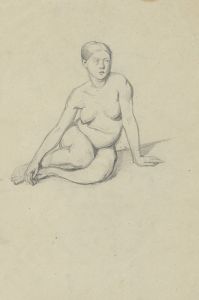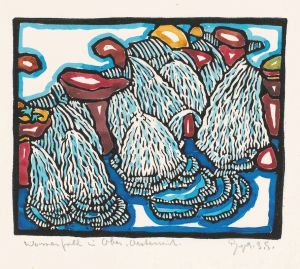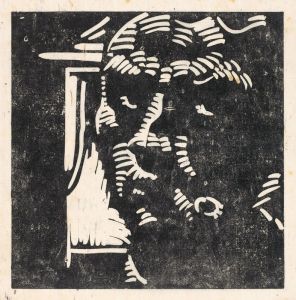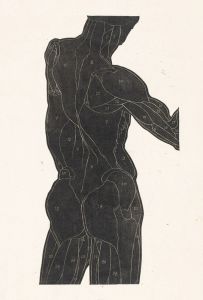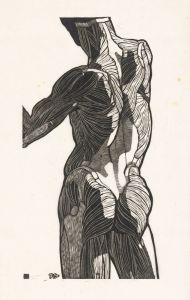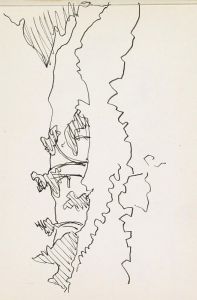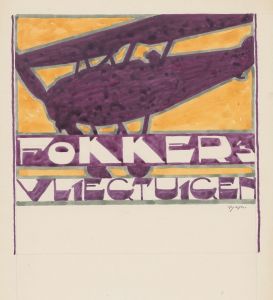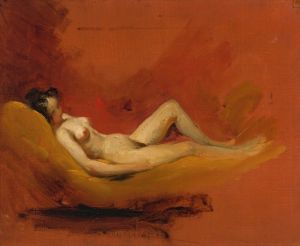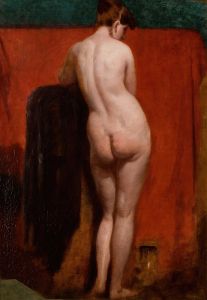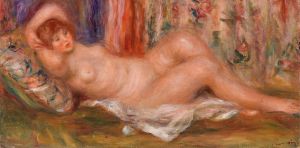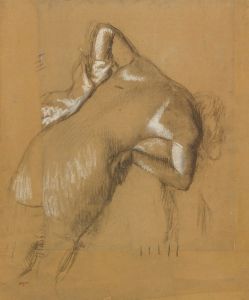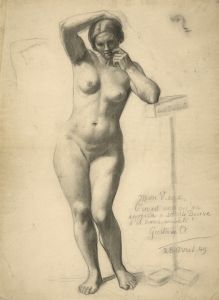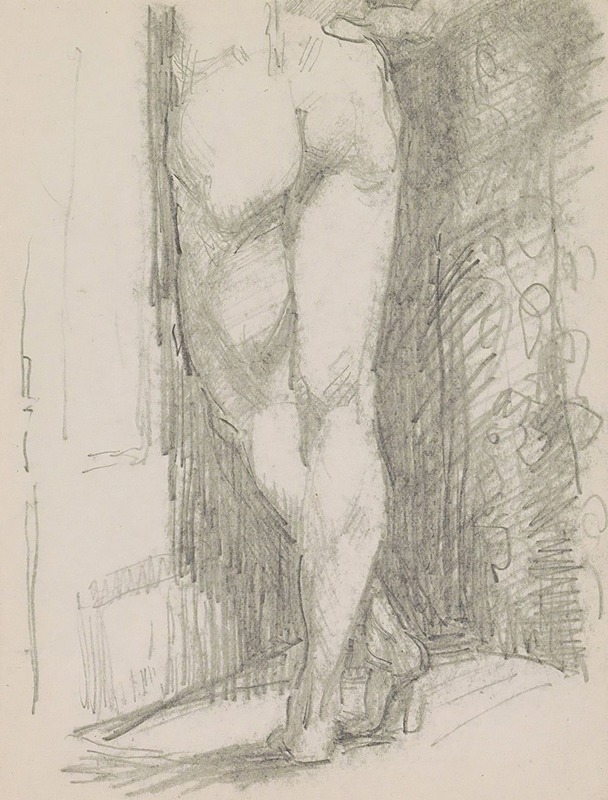
Achterzijde van een staande naakte vrouw
A hand-painted replica of Reijer Stolk’s masterpiece Achterzijde van een staande naakte vrouw, meticulously crafted by professional artists to capture the true essence of the original. Each piece is created with museum-quality canvas and rare mineral pigments, carefully painted by experienced artists with delicate brushstrokes and rich, layered colors to perfectly recreate the texture of the original artwork. Unlike machine-printed reproductions, this hand-painted version brings the painting to life, infused with the artist’s emotions and skill in every stroke. Whether for personal collection or home decoration, it instantly elevates the artistic atmosphere of any space.
Reijer Stolk was a Dutch artist known for his contributions to the art world during the early 20th century. He was born on November 21, 1896, in the Netherlands and became recognized for his work in various artistic disciplines, including painting, graphic design, and printmaking. Stolk's artistic style was influenced by the movements of his time, and he often explored themes related to the human form and nature.
One of his notable works is "Achterzijde van een staande naakte vrouw," which translates to "Backside of a Standing Nude Woman." This piece exemplifies Stolk's interest in the human figure, a common subject in art history that allows for the exploration of form, anatomy, and the play of light and shadow on the body. The painting captures the back view of a nude female figure, focusing on the contours and natural curves of the human body. This perspective allows the viewer to appreciate the subtlety of the human form without the distraction of facial features or expressions.
Stolk's technique in this work reflects his skill in rendering the human body with a sense of realism and sensitivity. The use of light and shadow is particularly noteworthy, as it highlights the musculature and the gentle curves of the figure's back, creating a sense of depth and three-dimensionality. The composition is both simple and elegant, drawing attention to the beauty of the human form in its most natural state.
The choice of depicting the back of a nude figure is significant in art, as it often conveys a sense of vulnerability and introspection. By focusing on the back, Stolk invites viewers to contemplate the subject's identity and emotions without the influence of facial expressions. This approach allows for a more universal interpretation of the figure, as it becomes a representation of humanity rather than an individual portrait.
Reijer Stolk's work, including "Achterzijde van een staande naakte vrouw," contributes to the broader tradition of nude studies in art. Throughout history, artists have been fascinated by the human body, using it as a means to explore themes of beauty, identity, and the human experience. Stolk's painting fits within this tradition, offering a modern interpretation that reflects the artistic trends of his time.
While specific details about the creation and exhibition history of "Achterzijde van een staande naakte vrouw" may not be widely documented, the painting remains an important part of Stolk's oeuvre. It showcases his ability to capture the essence of the human form with precision and artistry, contributing to his reputation as a skilled and thoughtful artist.
Reijer Stolk continued to create art until his death on January 18, 1945. His works, including "Achterzijde van een staande naakte vrouw," continue to be appreciated for their technical skill and the insight they offer into the artistic movements of the early 20th century. Through his exploration of the human figure, Stolk has left a lasting impact on the art world, and his paintings remain a testament to his talent and vision.





